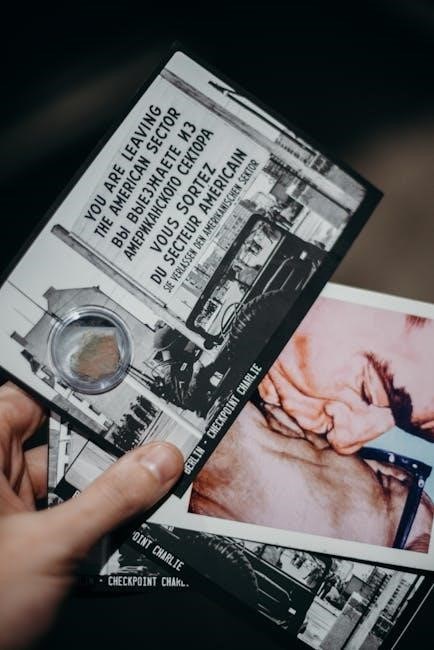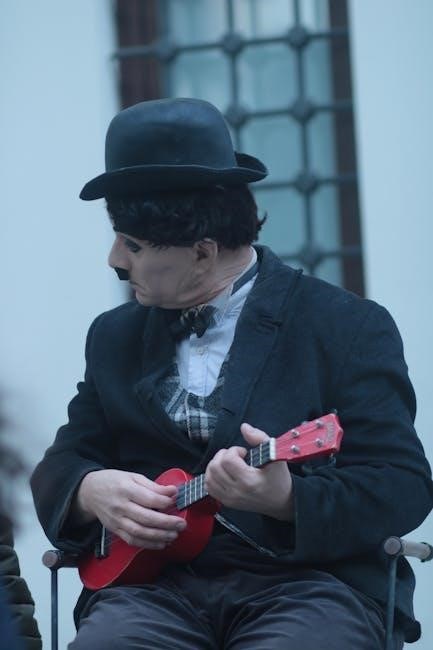charlie rutlage ives pdf
Overview of Charles Ives and His Work
Charles Ives, born in 1874, stands as a monumental figure in American music. He was an innovative composer. Ives was one of the first composers to gain international recognition. His compositions often incorporate American themes and musical styles.
“Charlie Rutlage” stands as a compelling example of Ives’s distinctive approach to art song. This dramatic song, included in Ives’s collection “114 Songs,” offers a glimpse into the composer’s engagement with American folklore and vernacular traditions. The song vividly portrays the life and demise of a cowboy named Charlie Rutlage.
Ives uses a text that came from John A. Lomax’s “Cowboy Songs”. It is a graphic description of the life of a cowboy. It shows his death during a spring roundup. The song begins with childlike innocence. Ives was fond of transforming his own songs for voice and piano into instrumental works or accompaniments.
The song reflects Ives’s broader interest in capturing the spirit of America through music. “Charlie Rutlage” is intensely dramatic. It paints a picture of cowboy life, death, and memory. It solidifies its place as a significant work within Ives’s extensive repertoire. It showcases his unique blending of classical composition with American folk elements.

Historical Context: Cowboy Songs and John A. Lomax
To fully understand “Charlie Rutlage,” understanding the historical context of cowboy songs and the work of John A. Lomax is essential. Lomax was a pioneering folklorist. He dedicated his life to collecting and preserving American folk music. He recognized the cultural significance of these songs.
His work, especially his collection “Cowboy Songs,” played a crucial role in popularizing the genre. Lomax documented the lives and experiences of cowboys through their songs. These songs often told stories of hardship, adventure, and the unique lifestyle of the American West. They included themes of cattle drives, companionship, and encounters with nature.
“Charlie Rutlage” draws directly from this tradition. It reflects the authenticity and storytelling found in Lomax’s collection. Ives transformed this into a dramatic art song. He reflects a broader interest in American musical heritage. Cowboy songs provided a rich source of inspiration. They allowed composers to connect with the nation’s cultural identity.
Analysis of the Song’s Lyrics and Narrative
“Charlie Rutlage” presents a vivid narrative of a cowboy’s life and tragic death. The lyrics, derived from cowboy ballads, paint a picture of frontier life. It also speaks to the dangers inherent in that lifestyle.
D.J. O’Malley’s Contribution
D.J. O’Malley is credited with writing the text for “Charlie Rutlage”. At the time of composition, the lyrics were believed to be anonymous. O’Malley’s work, however, drew from John A. Lomax’s collection of cowboy songs. Lomax is the collector of “Cowboy Songs”.
O’Malley’s contribution is significant. He created a narrative that resonated with the spirit of the American West. His lyrics paint a picture of cowboy life. Also, they depict the dangers and camaraderie associated with the open range. The XIT Ranch is mentioned.
His words serve as the foundation for Ives’s musical interpretation. O’Malley’s text brings the story of Charlie Rutlage to life. Also, it allows Ives to explore themes of mortality and heroism. The song begins as a simple eulogy. O’Malley’s contribution made this possible. The ballad is intensely dramatic.

Musical Characteristics of “Charlie Rutlage”
“Charlie Rutlage” reflects Ives’s innovative style, blending traditional elements with modern techniques. The song features a graphic depiction of a cowboy’s death. Ives transforms the song for voice and piano into instrumental works.
Ives’s Use of Humor and Pathos
Ives masterfully intertwines humor and pathos within “Charlie Rutlage,” creating a complex emotional landscape. The piece captures the raw reality of cowboy life. It begins with a childlike innocence, and the text and music tip their hat to the excitement. Ives uses musical devices to reflect both the lightheartedness and the tragic elements of the narrative.
The humorous elements often manifest in the energetic rhythms and the almost parodic use of cowboy musical tropes. This juxtaposition serves to heighten the emotional impact when the tone shifts to reflect Charlie’s untimely demise.
The use of pathos is evident in the somber melodies and harmonies that accompany the description of the accident. The contrast between the lively and the mournful creates a powerful emotional resonance, inviting listeners to both laugh and grieve alongside the characters in the song.
The song also touches on themes of loss and mortality, creating an elegy.

“Charlie Rutlage” within Ives’s Broader Oeuvre
“Charlie Rutlage” stands as a representation of Ives’s broader musical themes. This song is a reflection of Ives’s style and his ability to capture American stories. It also shows Ives’s fondness for American folk songs.
Ives’s American Themes
Charles Ives frequently drew inspiration from American life and culture. His compositions often incorporated elements of folk songs, hymns, and patriotic tunes, creating a distinctively American sound. Ives sought to capture the spirit of America in his music. He would convey the raw energy and diverse experiences of the nation. He did this through his innovative and experimental style.
“Charlie Rutlage” exemplifies Ives’s use of American themes. The song is based on a cowboy ballad collected by John A. Lomax, and depicts the life and death of a cowpuncher. This choice of subject matter reflects Ives’s interest in the American West and its iconic figures.
Ives also used American themes to explore deeper questions about national identity and values. In “Charlie Rutlage,” the simple story of a cowboy’s death becomes a meditation on courage, loss, and the fleeting nature of life. Through his music, Ives invited listeners to reflect on what it means to be American and the stories that define the nation.

Instrumental Versions and Adaptations
Charles Ives was known for his practice of adapting his compositions across different mediums. This is evident in the existence of instrumental versions and adaptations of “Charlie Rutlage.” Ives transformed his songs for voice and piano into instrumental works. He also derived songs from his instrumental works.
These instrumental versions highlight the underlying musical structure and harmonic language of the song. They also showcase Ives’s innovative approach to orchestration. An instrumental version transcribed by James B. Sinclair in 1984 exists. This underscores the enduring interest in adapting Ives’s work for various ensembles.
The adaptation of “Charlie Rutlage” into instrumental forms allows for a fresh interpretation of the song’s narrative. Without the vocal component, the instrumental arrangements emphasize the emotional and dramatic aspects of the music. They also allow listeners to appreciate Ives’s compositional skill. These versions offer an alternative perspective on this iconic American song.
Performances and Recordings of “Charlie Rutlage”
“Charlie Rutlage” has garnered attention through numerous performances and recordings. These interpretations have contributed to the song’s legacy. Baritones like Thomas Hampson have recorded the song, collaborating with pianists such as Craig Rutenberg. These performances capture the dramatic essence of the cowboy ballad.
Bass-baritones, including Patrick Carfizzi, have also performed the song. They have collaborated with pianists like Douglas Dickson to present their interpretations. Steven Kimbrough, accompanied by Dalton Baldwin, offers another recorded version. The performances reveal the song’s emotional depth.
These recordings and performances provide diverse perspectives on Ives’s composition. They showcase the technical demands and interpretative possibilities inherent in the work. They also contribute to the ongoing appreciation of Ives. “Charlie Rutlage” remains a staple in the repertoire of vocalists. This showcases the enduring appeal and artistic merit of this American classic.
Legacy and Reception of “Charlie Rutlage”
“Charlie Rutlage” holds a significant place in Charles Ives’s broader body of work. The song showcases Ives’s unique approach to incorporating American themes into his compositions. Its graphic depiction of a cowboy’s death during a spring roundup has resonated with audiences. It has garnered the attention of musicologists and performers alike.
The song is often cited as an example of Ives’s innovative use of musical humor and pathos. Ives combines elements of cowboy ballads with his own modernist sensibilities. “Charlie Rutlage” has solidified its position as a notable piece within the American art song tradition.
Its inclusion in Ives’s “114 Songs” collection has further cemented its legacy. Performances and recordings continue to introduce new generations to the song’s distinct narrative. The song is a testament to Ives’s ability to capture the spirit of America through music.
